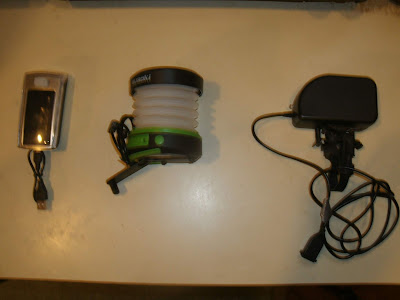Building Off the Grid - DIY Network TV show with 34 episodes as of December 2018
https://www.diynetwork.com/shows/building-off-the-grid
Trondheim, Norway’s net energy positive building, Powerhouse Brattørkaia, "will generate more energy in its operational phase than it consumes through the production of buiding materials, construction, operation, and disposal of the building” or Snøhetta strikes again
https://www.powerhouse.no/en/prosjekter/powerhouse-brattorkaia/
https://www.citylab.com/environment/2018/12/norway-energy-positive-building-powerhouse-snohetta/577918/
Rocky Mountain Institute’s Carbon-Free City Handbook
https://rmi.org/insight/the-carbon-free-city-handbook/
Rocky Mountain Institute’s Carbon-Free Region Handbook
https://www.rmi.org/insight/carbon-free-regions-handbook/
Nearly zero-energy buildings
https://ec.europa.eu/energy/en/topics/energy-efficiency/buildings/nearly-zero-energy-buildings
Zero net energy Project Guide
https://newbuildings.org/wp-content/uploads/2017/08/GtZ-ZNEProjectGuide_FINAL.pdf
Santa Monica City Residential Zero Net Energy Guide for New Construction
https://www.smgov.net/uploadedFiles/Departments/OSE/Categories/Green_Building/SantaMonica_Residential%20ZNE%20Guide.pdf
Green Building Energy Code Overview
https://www.smgov.net/Departments/OSE/Categories/Green_Building/Energy_Code_Overview.aspx
UN17 Village, a sustainable residential development of 400 new homes to Copenhagen, Denmark, “the first building project in the world that translates all 17 of the United Nations’ Sustainable Development Goals (SDGs) into tangible action.”
https://lendager.com/en/news/un17-village-the-worlds-most-sustainable-building-project/
https://inhabitat.com/ecovillage-in-copenhagen-strives-to-meet-all-17-sustainable-development-goals/
Dutch microgrid communities with up to 90% renewables
https://www.weforum.org/agenda/2018/09/these-dutch-microgrid-communities-can-supply-90-of-their-energy-needs/
Zero Energy House - CleanTech Sundsvall
https://vimeo.com/77403726
from http://www.cleantechregion.com
Pax Futura - Seattle 35 unit apartment building built to Passivhaus standards at 5% more per square foot than Seattle code with 50% less annual energy use (and costs)
https://www.livepaxfutura.com/floorplans/
https://www.treehugger.com/green-architecture/small-apartment-building-seattle-could-be-model-solving-our-housing-and-energy-crises.html
Short video on the Netherland's Energiesprong, a program for ongoing deep energy retrofit of existing housing to approach net zero energy
https://vimeo.com/235335180
http://energiesprong.eu
Mass Production of Net Zero Energy Retrofits for Single Family Homes
https://www.dailykos.com/stories/2019/1/9/1824927/-Mass-Production-of-Net-Zero-Energy-Retrofits-for-Single-Family-Homes
Japan plans to develop 2020 Olympics Village into 'hydrogen town’
https://www.ibtimes.co.uk/japan-plans-develop-2020-olympics-village-into-hydrogen-town-1482091
https://www.diynetwork.com/shows/building-off-the-grid
Trondheim, Norway’s net energy positive building, Powerhouse Brattørkaia, "will generate more energy in its operational phase than it consumes through the production of buiding materials, construction, operation, and disposal of the building” or Snøhetta strikes again
https://www.powerhouse.no/en/prosjekter/powerhouse-brattorkaia/
https://www.citylab.com/environment/2018/12/norway-energy-positive-building-powerhouse-snohetta/577918/
Rocky Mountain Institute’s Carbon-Free City Handbook
https://rmi.org/insight/the-carbon-free-city-handbook/
Rocky Mountain Institute’s Carbon-Free Region Handbook
https://www.rmi.org/insight/carbon-free-regions-handbook/
Nearly zero-energy buildings
https://ec.europa.eu/energy/en/topics/energy-efficiency/buildings/nearly-zero-energy-buildings
Zero net energy Project Guide
https://newbuildings.org/wp-content/uploads/2017/08/GtZ-ZNEProjectGuide_FINAL.pdf
Santa Monica City Residential Zero Net Energy Guide for New Construction
https://www.smgov.net/uploadedFiles/Departments/OSE/Categories/Green_Building/SantaMonica_Residential%20ZNE%20Guide.pdf
Green Building Energy Code Overview
https://www.smgov.net/Departments/OSE/Categories/Green_Building/Energy_Code_Overview.aspx
UN17 Village, a sustainable residential development of 400 new homes to Copenhagen, Denmark, “the first building project in the world that translates all 17 of the United Nations’ Sustainable Development Goals (SDGs) into tangible action.”
https://lendager.com/en/news/un17-village-the-worlds-most-sustainable-building-project/
https://inhabitat.com/ecovillage-in-copenhagen-strives-to-meet-all-17-sustainable-development-goals/
Dutch microgrid communities with up to 90% renewables
https://www.weforum.org/agenda/2018/09/these-dutch-microgrid-communities-can-supply-90-of-their-energy-needs/
Zero Energy House - CleanTech Sundsvall
https://vimeo.com/77403726
from http://www.cleantechregion.com
Pax Futura - Seattle 35 unit apartment building built to Passivhaus standards at 5% more per square foot than Seattle code with 50% less annual energy use (and costs)
https://www.livepaxfutura.com/floorplans/
https://www.treehugger.com/green-architecture/small-apartment-building-seattle-could-be-model-solving-our-housing-and-energy-crises.html
Short video on the Netherland's Energiesprong, a program for ongoing deep energy retrofit of existing housing to approach net zero energy
https://vimeo.com/235335180
http://energiesprong.eu
Mass Production of Net Zero Energy Retrofits for Single Family Homes
https://www.dailykos.com/stories/2019/1/9/1824927/-Mass-Production-of-Net-Zero-Energy-Retrofits-for-Single-Family-Homes
Japan plans to develop 2020 Olympics Village into 'hydrogen town’
https://www.ibtimes.co.uk/japan-plans-develop-2020-olympics-village-into-hydrogen-town-1482091

















